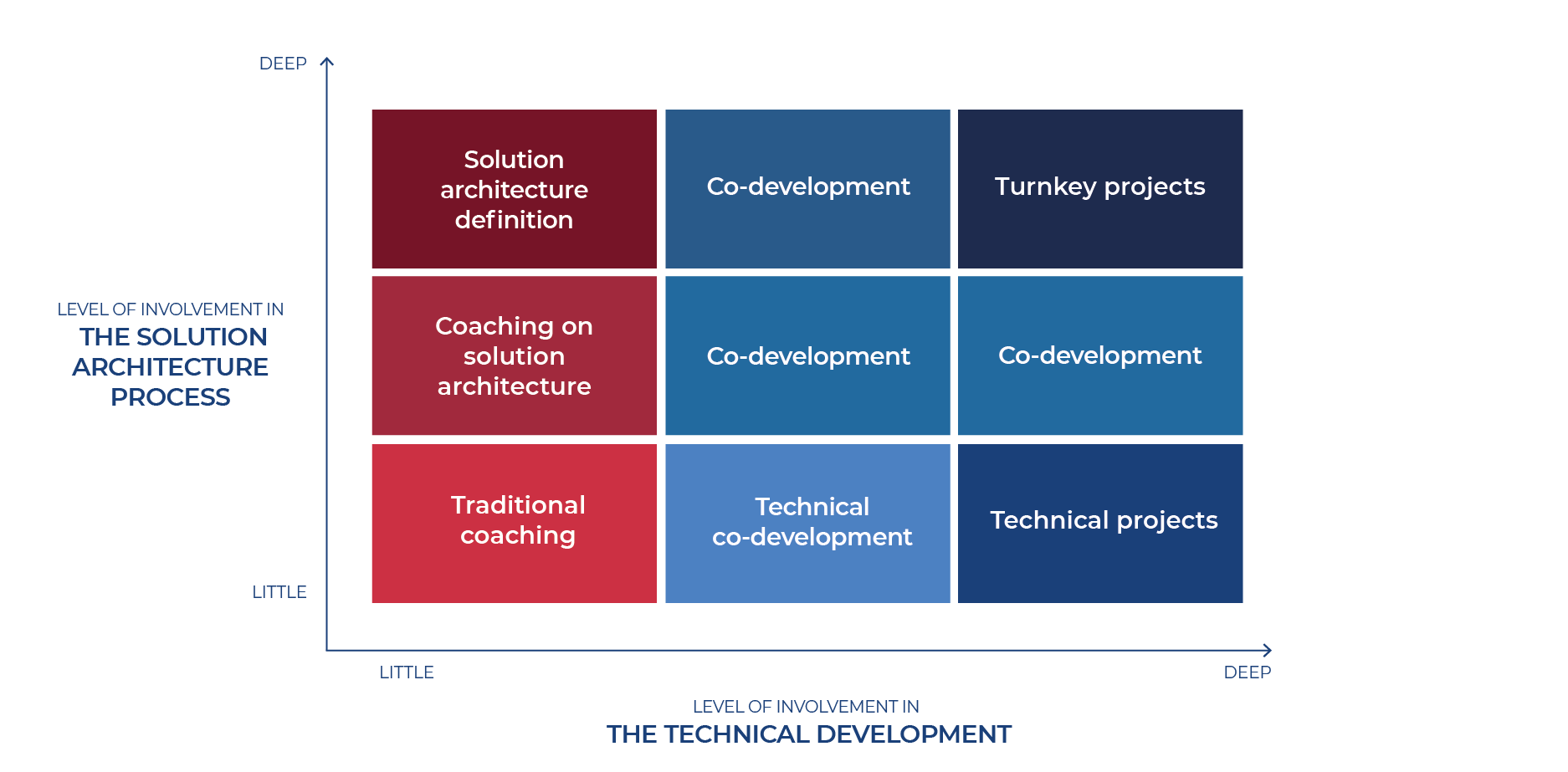Our mission at Consortech is to help leaders in the field of geomatics to showcase their department’s capabilities. This can be accomplished through various means, including providing teams with knowledge transfer training.
We offer various services to help our clients improve their knowledge and skills, including strategic consulting, traditional training, project coaching, co-development, and detailed turnkey project documentation.
We’ve been using the term “coaching” and providing it as a service for over a decade. After completing several projects, we adjusted our approach to meet client constraints. This has allowed us to enhance our offering and expand the vocabulary used to reflect the work done by Consortech and client teams.
The basic definition of coaching
Initially, this service’s goal was rather straightforward: assist clients in implementing their first project using knowledge gained during training, enabling them to carry out subsequent projects independently. This process involved reviewing the process that required automation and devising a development strategy based on best practices.
To achieve this, a Consortech geomatics expert met with clients once or twice weekly to ensure compliance with pre-defined criteria. Specific technical questions were then answered, realistic goals were set for the next meeting, and the process continued until the end of the project. The objective was to expedite and streamline the project by creating future-proof adaptable scripts, FME Workspaces, and sustainable ArcGIS applications.
The constraints of reality
Over time, we found that while our clients desired to empower their teams, they faced constraints in finding suitable projects for traditional coaching.
This prompted us to investigate the obstacles that prevented coaching from having the desired outcome.
- Overly simple or complex projects
- Failure to understand business needs
- Confusion around processes that require automation
- Poorly understood data and systems
Improving the performance of a geomatics department by determining the right projects can be challenging. The lack of knowledge regarding the capabilities of low-code technologies such as FME and the mental workload required of geomatics managers to respond to ever-increasing ad hoc demands contributes to the problem. Our Ignition Kit is designed specifically to overcome these limitations.
The origins of co-development
Co-development was created to bridge the gap between turnkey projects and project coaching.
Looking at the situation from a coaching perspective, we find that clients sometimes need help overcoming the above-mentioned constraints. When resources, time, or expertise is lacking, external help can clarify user needs, optimize processes, or analyze data and systems. In such cases, co-development presents an opportunity for collaborative problem-solving.
On the other hand, consultants may need to have a deep understanding of the client’s organization or specific expertise outside of geomatics for turnkey projects. Here are some recent issues we’ve had to address: lack of advanced statistical knowledge, unfamiliarity with a specific API, and failure to adhere to a particular standard or process. In these cases, co-development allows the consultant to complete a project by leveraging the complementary expertise of their client.
How does a co-development project work?
Step One
Define each person’s level of involvement in identifying requirements and analyzing the relevant processes, data, and systems.
Step Two
Select the team responsible for creating the architecture and developing the solution while considering the availability of the client’s team and the project’s urgency. It’s also important to evaluate whether it would benefit the client to take the lead in developing the technical solution or if their expertise is required to expedite the project’s completion.

Which type of co-development should you choose?
Your GIS department should determine their preferred level of involvement in solution architecture and technical development. This matrix displays different implementation options based on desired responsibility.
Things to consider when choosing between coaching, co-development, and turnkey projects
- Coaching requires more client-team involvement and less consultant intervention.
- Co-development divides responsibilities to varying degrees.
- Turnkey projects require little or no client involvement.
This last method can still enhance client expertise if detailed documentation and solution presentation sessions are included in the mandate.
There are various nuanced perspectives when it comes to deciding the most effective method of delivering a project. The first step is clearly defining the project’s scope, timeline, and budget. When empowering clients, it’s also important to consider the skills and availability of their team.
Looking to enhance your team’s geospatial performance and implement successful projects? Contact us today!
